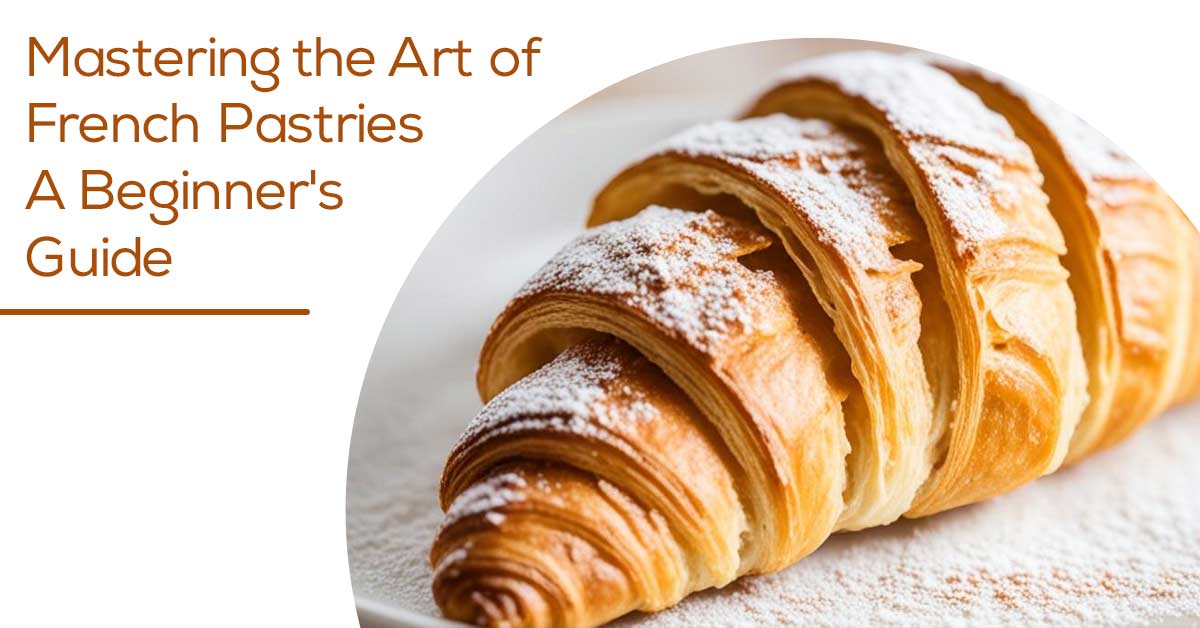
French pastries, with their delicate layers, rich flavors, and elegant presentation, have enchanted dessert enthusiasts for centuries. From the flaky croissants of Parisian boulangeries to the intricate éclairs filled with luscious crème pâtissière, French pastries are a testament to the country’s culinary prowess. For beginners, venturing into the world of French pastries can seem daunting, but with the right guidance and understanding of key techniques and professional training through our baking classes in Chennai, it becomes a delightful journey. This guide aims to provide a comprehensive introduction to mastering French pastries, emphasizing foundational skills, essential tools, and the artistry behind these culinary masterpieces.
Understanding the Basics: What Makes a French Pastry?
French pastries are renowned for their precise techniques and high-quality ingredients. At their core, these pastries often rely on a few fundamental components:
Dough: Many French pastries begin with either a laminated dough (used for croissants and puff pastry) or a pâte à choux (used for éclairs and cream puffs). Mastering the dough-making process is crucial as it forms the base of many classic pastries.
Fillings and Creams: French pastries are often filled with rich, velvety creams like pastry cream, frangipane, or ganache. Each filling has a unique texture and flavor profile, adding depth and complexity to the pastry.
Glazes and Finishes: The finishing touches on French pastries, such as glazes, powdered sugar, or delicate drizzles of chocolate, not only enhance the visual appeal but also contribute to the overall taste experience.
Essential Tools for French Pastry Making
To start your journey into French pastry making, it’s important to equip yourself with some essential tools:
Rolling Pin: A good quality rolling pin is essential for rolling out dough evenly.
Pastry Brush: Useful for applying egg wash or glazes.
Piping Bags and Tips: Necessary for filling éclairs, cream puffs, and decorating pastries.
Baking Sheets and Parchment Paper: Ensuring even baking and easy cleanup.
Pastry Cutter and Bench Scraper: Helpful for handling dough and achieving precise cuts.
Digital Scale: Precision in measurements is critical in pastry making.
Key Techniques to Master
Laminated Dough: This technique involves folding butter into the dough multiple times to create thin, flaky layers. It’s used in making croissants, puff pastries, and Danish pastries. Patience and precision are key, as the dough needs to be kept cold to prevent the butter from melting.
Pâte à Choux: This versatile dough is used to make éclairs, cream puffs, and profiteroles. The dough is cooked on the stovetop before being piped and baked, resulting in a light, airy pastry with a crisp exterior.
Pastry Cream: A staple in many French pastries, pastry cream (crème pâtissière) is a thick custard made from milk, eggs, sugar, and cornstarch. It can be flavored with vanilla, chocolate, or coffee, and is used to fill éclairs, tarts, and cream puffs. Many professional baking classes in Chennai teach you all the fundamental techniques to make it easy for you.
Meringue: There are several types of meringue (French, Swiss, and Italian), each with its own method of preparation. Meringue is used for decorative purposes, as a base for mousses, or as a light, airy filling.
Tempering Chocolate: Achieving the perfect glossy finish and snap for chocolate decorations or coatings requires tempering. This process involves heating and cooling chocolate to specific temperatures to stabilize the cocoa butter crystals.
Classic French Pastries to Try
Once you’ve familiarized yourself with the basic techniques, it’s time to try your hand at some classic French pastries:
Croissants: These buttery, flaky pastries are a breakfast staple. The key to perfect croissants lies in the lamination process, where layers of butter are folded into the dough.
Éclairs: Made from pâte à choux and filled with pastry cream, éclairs are often topped with a glossy chocolate glaze. Their elongated shape and smooth finish make them a bakery favorite.
Tarte Tatin: This upside-down caramelized apple tart is a beautiful example of French baking simplicity and elegance. It combines flaky pastry with richly caramelized apples for a delightful contrast of textures.
Macarons: These delicate almond meringue cookies filled with ganache or buttercream are known for their smooth tops, ruffled edges (known as feet), and a slight chewiness. Mastering macarons requires precision in technique and timing.
Madeleines: These shell-shaped sponge cakes are light and buttery, often flavored with lemon or vanilla. They are baked in a special madeleine pan, which gives them their distinctive shape.
Mille-Feuille: Also known as the Napoleon, this pastry consists of layers of puff pastry alternated with pastry cream, topped with a layer of icing. The name means “a thousand leaves,” referring to the many layers of flaky pastry.
The Importance of Ingredient Quality
In French pastry making, the quality of ingredients is paramount. Using high-quality butter, fresh eggs, and pure vanilla can make a significant difference in the final product. French pastries often highlight the natural flavors of these ingredients, so investing in the best you can find is worth the effort.
French pastries are more than just desserts; they are an expression of art, precision, and tradition. By mastering the foundational techniques through our baking classes in Velachery and embracing the artistry involved, beginners can create stunning pastries that delight the senses. Whether you’re baking for family, friends, or simply for the joy of it, the journey into French pastry making is a delicious adventure that p
romises endless satisfaction. So roll up your sleeves, gather your tools, and start your journey to mastering the art of French pastries today.
